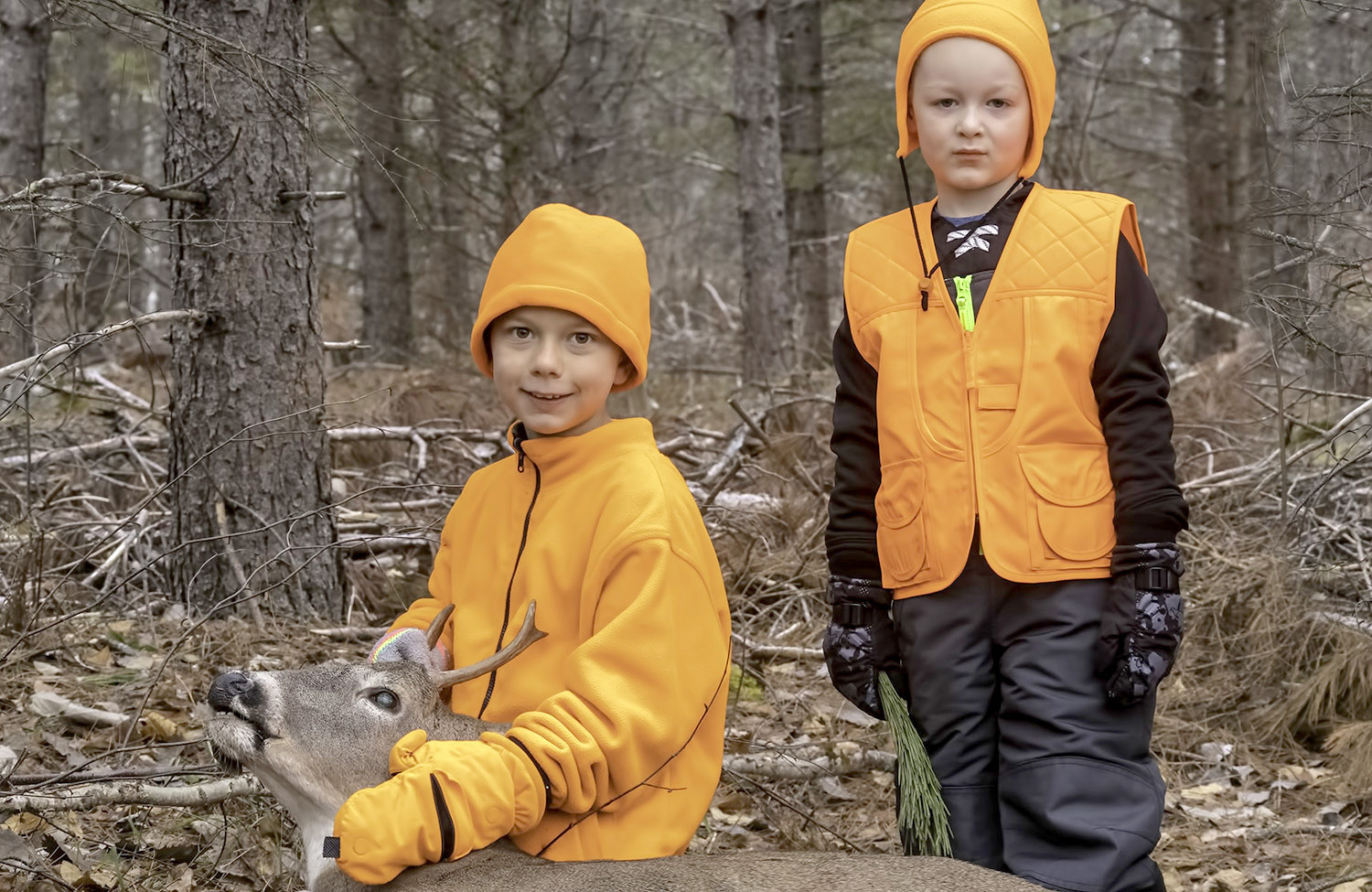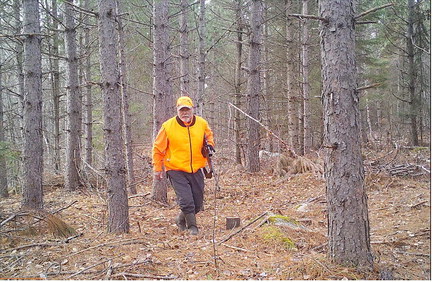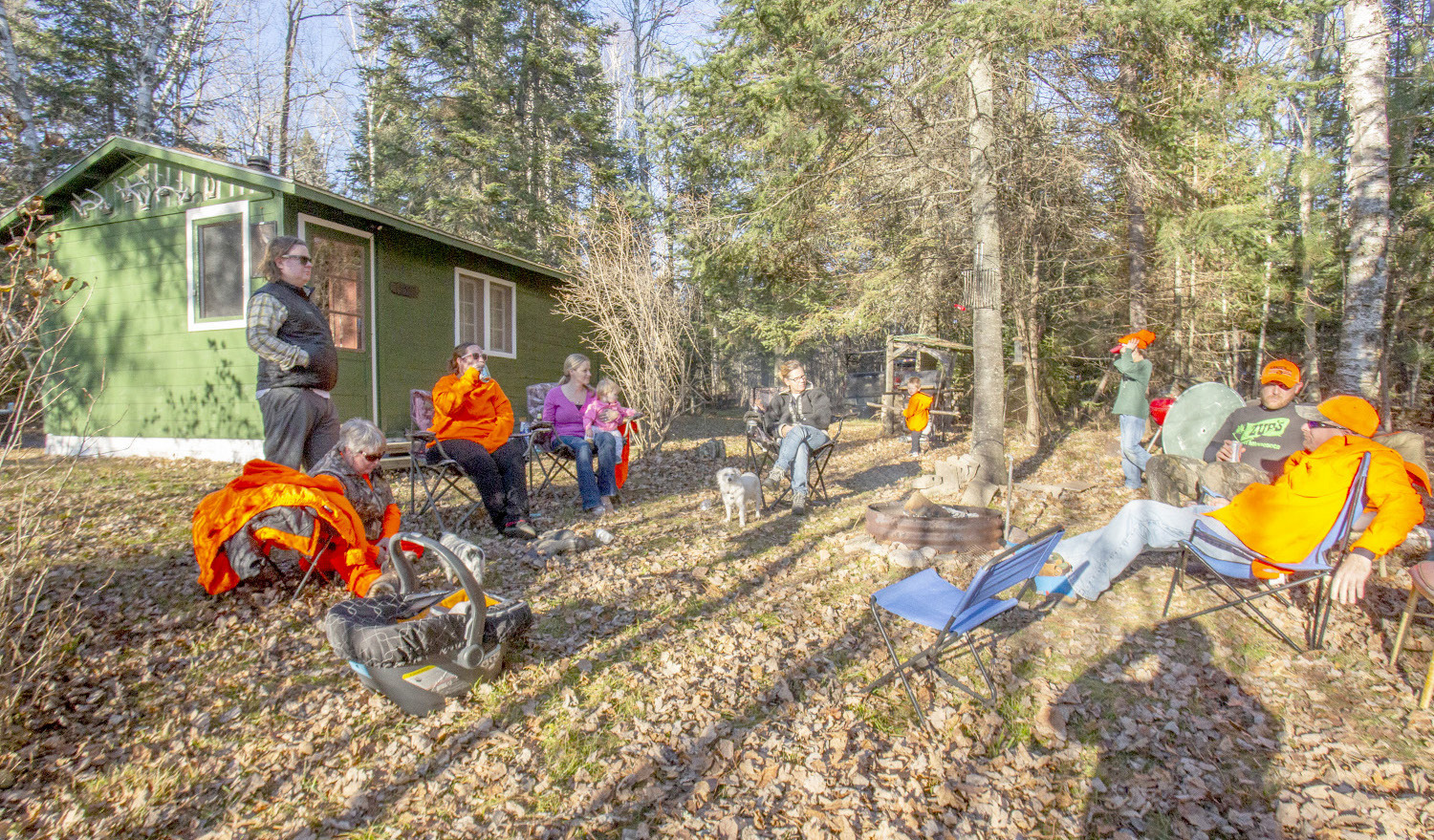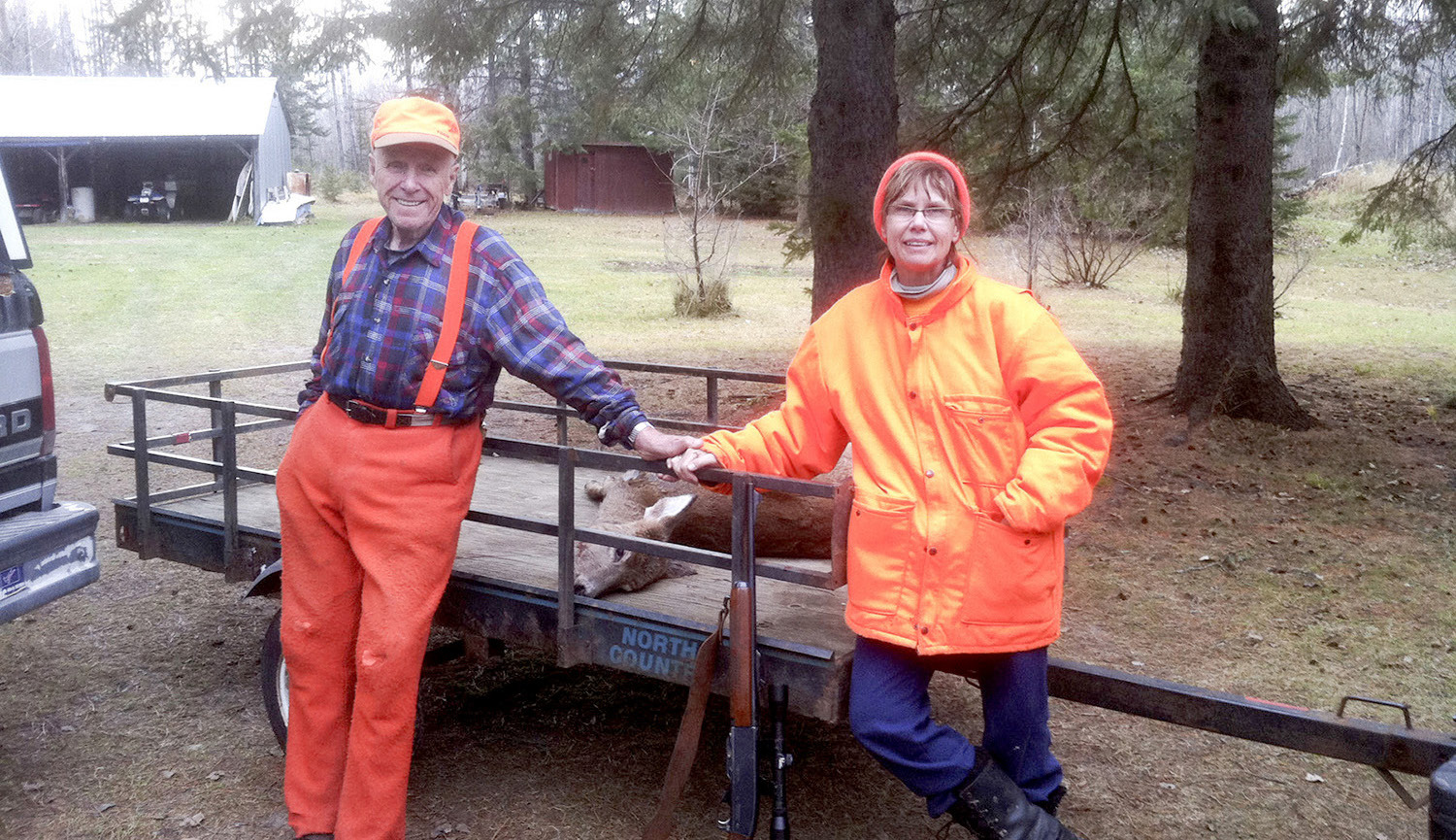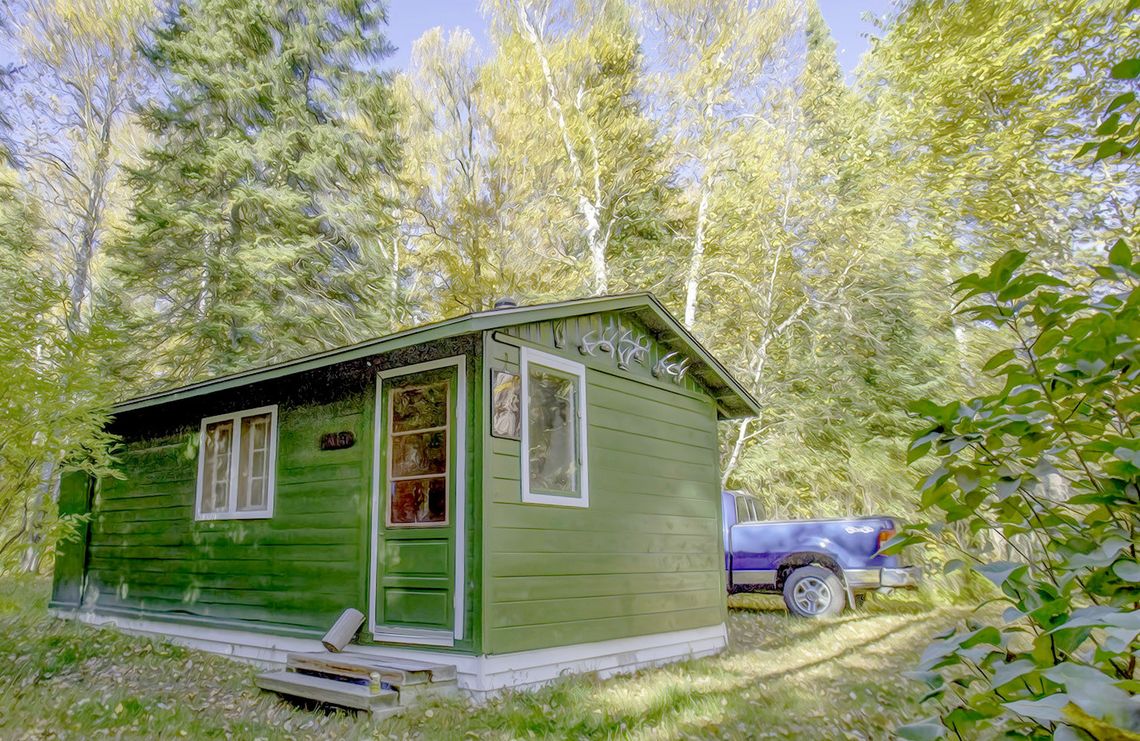MY FIRST PUBLISHED ARTICLE
Many don’t know that I have been publishing articles for many years. My first occurred in the 1990s, and I had to tell Buck about it.
April 19, 1996 Buck Hey, I have to let you know about a project I’ve been working on. I’m sure you remember Mr.
Lang and Mr. Nielson from our high school days. They both were instrumental in helping found the Minnesota Deer Hunters Association. The MDHA has a publication called “Whitetails” and I submitted an article to them a couple of months back and they accepted and published it. Not sure what this might mean for the future, but I rather enjoy doing some writing. Thought you might like what I wrote, especially since part of the story involves the territory behind your property.
The One Driver System
It was Wednesday of Minnesota’s nine-day season the year I was a sophomore in high school. I got off the school bus at about 4:15 p.m. and when I walked through the kitchen door, Mom told me that Dad was in the Jackpine Stand. I quickly changed into my hunting clothes, grabbed my deer rifle and began what we called the “Garage Drive.”
It started as the name implies behind the garage and proceeded along a swamp, through a balsam thicket, past the end of Makinen’s hay field, and finished along a beaver flowage where the Jackpine Stand was located. It took about 25 minutes to make the push. I chased a buck and two does past Dad that afternoon and in the course of less than a minute, he filled the three tags we had for the season.
Though I was still pretty new to deer hunting, I was fast learning the basics for a method of hunting that my parents developed out of necessity. During the late 50s and into the 60s, deer hunting for the iron miners of northern Minnesota was more than just recreation. Canned venison was eaten several times a week and the only steaks many had were from the loins of the deer that laid off miners shot during the November season. Many wives took up hunting as my mother did, to increase the amount of venison a family could put away for the winter. Depending on a chance encounter with a whitetail was a poor option for those families.
Until I was old enough to tag along, my parents were a hunting party of two. With six kids in the family under the age of 12, long hours of sitting was not an acceptable style of hunting for them. They developed a method for moving deer efficiently that we still use almost half a century later.
The most important factor in this system is an intimate knowledge of how deer move within the area you hunt. Notice I said, “of how deer move,” not on what the lay of the land is. Though knowing the land is important, thinking like a deer is more important.
My dad had hunted this area since the late 1930s and knew its features better than the back of his hand. However, years of experience had taught him how the deer used those features. He knew that if he approached a bedding area at the end of the ravine, deer that might be there had only two escape routes. By reckoning the wind, he would place my mother on the appropriate route and walk in from the downwind side. My mother had learned to become a crack shot and more often than not such a tactic would result in stew meat for the kettle.
Over the years they hunted together and later when my siblings and I joined the ranks, we divided our hunting territory into several small, one driver pushes. Adding a hunter or two meant that we could cover more than one escape route and added to our chances of bagging a deer. Combining our property and the adjoining state, county and paper company holdings, we had about 160 acres that we typically could hunt. Wind directions usually determined the order of the drives and which trails or features we posted standers on. We had almost a circular pattern to our drives so that when we finished one, depending on what sign we might see, we could re-establish standers and within a few minutes be ready to make another push. All the drives were short and could be set up and finished in half an hour’s time or less. Drivers would try to “sneak” hunt or still hunt rather than crash through the brush. Getting a little closer to the deer before they were detected, a driver kept the deer focused on himself and paid less attention to what might be waiting alongside of one of their escape routes.
One set of drives we do is called “Behind Ranowski’s.”
The piece of land is roughly half a mile long and a quarter mile wide. It lies lengthwise in an east/ west direction and works the best with a south or east wind. The area is bounded on the south by Snaptail Lake, to the north by Newton’s logging road and on the west by County Road 343. The east end runs into a ravine that holds a big swamp in its middle. The interior of this patch of woods is about equally divided into areas of wet swamp and high ground. Within the swampy areas are several spruce covered islands that serve as bedding areas and rutting grounds for the deer. The strategy works best with three standers but can be modified to be used with anywhere from one stander to five.
With three standers we break the drive into two parts. All four walk down the logging road towards the west with two of the standers assigned to crossings that head to the north across the road.
The deer tend to use these crossings on the first leg of a quick getaway. The third stander moves to the middle of the property to what we call the “High Stand”.
That stand covers two trails that less panicked deer usually follow into the wind. The driver continues
walking west to the county road, turns south to a crossing at the middle of the property and starts into the woods skirting most of the swamp, moving into the swamp only enough to pass through the spruce islands. Deer bedded down for the day in the first part of the drive normally head to the crossings to the north or down the middle trails past the High Stand when spooked. Total time for this push is about 20 minutes.
When the driver gets to the High Stand, that hunter goes back out to the logging road, picks up the two other standers and heads east back down the road. They reposition themselves, one at another crossing on the road, one at a crossing on a survey line we call “the end of the lake” and the third has a choice of either the “Swamp Stand” or the “White House”. The driver gives the other hunters about ten minutes to get into position and starts the push through the second half of the drive. There is less swamp in this section and the drive starts with a walk through a 40 that was clearcut over a decade ago. The popple brush serves as a feeding area for the deer and although they normally don’t bed down in this patch, along one side is a stand of thick balsam that they do spend some time in. The driver moves diagonally through the brush to the balsams and then skirts behind Ranowski’s cabin (hence the name of the drive) and comes out to the stander covering “the end of the lake.” Total time for this second half of the drive is about 25 minutes. Seldom does this drive fail to produce at least a look at deer that might be residing in this patch of Northwoods. Depending on the number of standers, if a deer takes a route that we didn’t cover to begin with, additional established drives might be set up in just a few minutes from this point.
It’s interesting to note that after decades of time and several firewood and pulp cuttings, the deer today still use the same trails that the deer of my dad’s early years of hunting did. The “Garage Drive” we use today is the same as it was over 30 years ago when I drove those three past Dad on a snowy November afternoon, even though the area has been logged off twice since then. Only the hunters change. My parents hunt less and less every year, but my son and sisters and their husbands and boyfriends now cover the crossings and keep alive the knowledge that we need to pass from generation to generation. It’s a legacy started long ago, born of necessity and turned into tradition.
Buck, being that this passed behind your house and sometimes you were one of the standers, I thought this tail could have special meaning for you. As I said, I don’t know where this writing thing might lead, but I’m happy to put some of this history down for those to enjoy long after we’re gone.
Take care, Hoops
